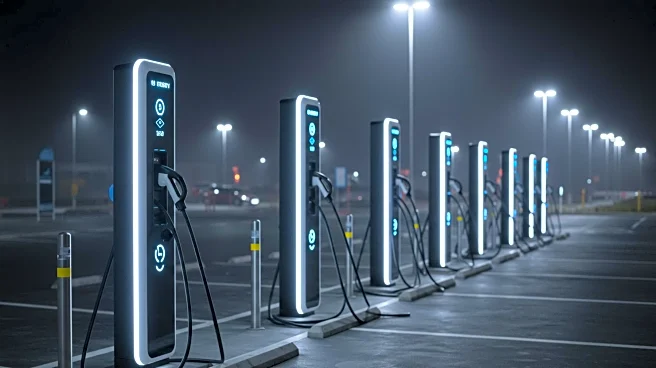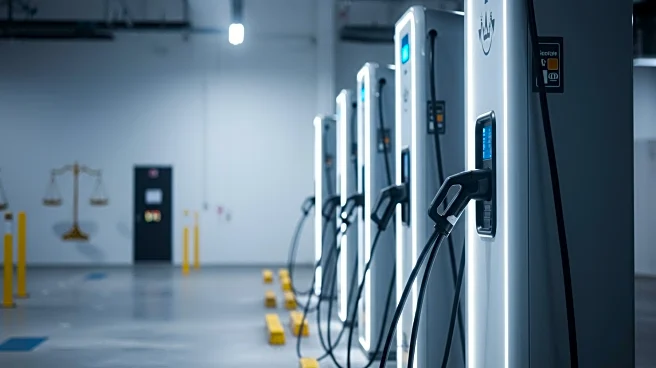What's Happening?
The Trump administration has decided to reopen a federal program aimed at funding the installation of high-speed electric vehicle (EV) chargers along freeways nationwide. This decision follows a six-month freeze in funds and a legal battle with more than a dozen states. The program, known as the National Electric Vehicle Infrastructure (NEVI) program, was initially paused by the Department of Transportation in February, leading to a lawsuit from states arguing that the administration was violating the law by withholding funds. A federal judge issued a preliminary injunction in favor of the states, prompting the administration to release new guidance and restart the program. The revised guidance removes several Biden-era requirements, such as engaging with rural or underserved communities and directing benefits toward disadvantaged communities.
Why It's Important?
The reopening of the NEVI program is significant for the U.S. electric vehicle industry, as it aims to accelerate the deployment of EV chargers, which are crucial for supporting long-distance EV travel. The program earmarked $5 billion for this purpose, and its delay had frustrated both EV advocates and charging companies. The new guidance is expected to streamline the process, potentially unlocking more financial gains and job opportunities. However, the removal of certain requirements may impact the equitable distribution of chargers, particularly in rural and underserved areas. The decision underscores the ongoing tension between federal and state governments over infrastructure spending and the role of green energy initiatives.
What's Next?
With the program now restarted, states will begin submitting plans for charger installations, which will be reviewed and approved by the Department of Transportation. The legal battle may continue as states seek to ensure that all promised funds are distributed appropriately. Charging companies and EV advocates will likely monitor the implementation closely, assessing the impact of the revised guidance on the speed and efficiency of charger deployment. The changes may also prompt further discussions on the balance between cutting red tape and ensuring equitable access to infrastructure.











